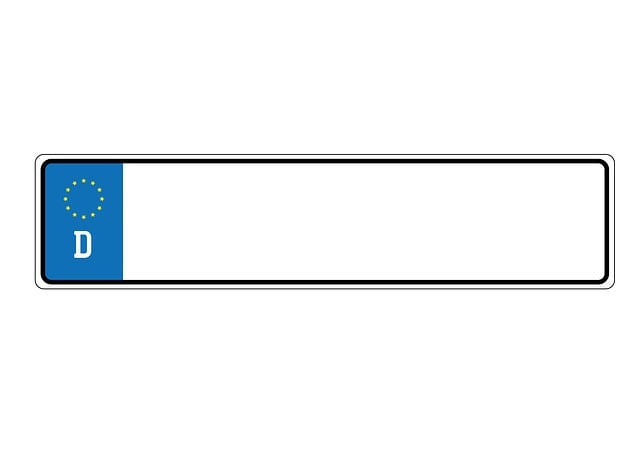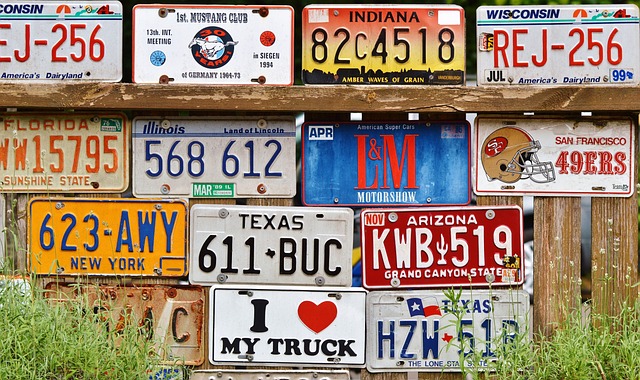Misplacing or damaging your vehicle’s license plate can be a hassle, but understanding the replacement process simplifies it. First, report the lost or stolen plate to your local Department of Motor Vehicles (DMV) to prevent misuse. Then, complete necessary forms and pay applicable fees. Some states may require a police report for stolen plates. Once processed, the DMV will issue new plates, ensuring legal compliance. Timely action is crucial to avoid fines or legal issues. This guide covers reporting lost/stolen plates, completing paperwork, ordering new plates, and preventing future problems.
- Reporting a Lost or Stolen License Plate to the DMV
- Completing Forms and Paying Replacement Fees
- Obtaining and Installing New License Plates
- Preventing Future Issues with Timely Action
Reporting a Lost or Stolen License Plate to the DMV

Reporting a lost or stolen license plate to your local Department of Motor Vehicles (DMV) is a critical step in the replacement process. This simple action prevents potential misuse of your vehicle’s registration and helps maintain your compliance with local laws. When reporting, provide detailed information about the loss or theft, including the last known location and date of the incident. Some states may also require you to submit a police report, especially if the plate was stolen, as proof of the event. This process ensures that only authorized individuals can apply for a replacement, safeguarding your vehicle’s legal status.
By reporting the lost or stolen plate promptly, you initiate the DMV’s official procedure for replacement. This involves filling out necessary forms and remitting any associated fees, which vary by state and jurisdiction. The DMV will then process your request, typically issuing new license plates once approved. Timely action is key to avoiding potential fines or legal complications that could arise from an unregistered vehicle.
Completing Forms and Paying Replacement Fees

Completing Forms and Paying Replacement Fees is a straightforward process designed to keep your vehicle legally registered. Most states provide an online or in-person option for requesting replacement license plates, with specific forms to fill out detailing the reason for the loss or damage. Be sure to have your vehicle’s registration information handy as this will be required to verify ownership and complete the transaction.
While each state may vary slightly in its requirements, expect to encounter standard fees associated with replacing a lost or damaged license plate. These fees cover the cost of manufacturing new plates and processing the request. Some states may also charge additional fees for expedited service if you require new plates urgently.
Obtaining and Installing New License Plates

After reporting your lost or stolen license plate and completing the administrative tasks, it’s time to obtain and install new ones. Most states allow you to order new plates online through the DMV website or in person at a local office. You’ll typically need to provide identification and proof of vehicle ownership when ordering. The process is usually straightforward, but be sure to double-check any specific requirements for your area, as license plate replacement fees and turnaround times may vary.
Once received, carefully install the new plates on your vehicle. Ensure they are securely fastened according to the manufacturer’s guidelines. Keep in mind that some regions mandate specific font sizes or formats for license plates, so double-check these details before installation to avoid any potential issues during future inspections.
Preventing Future Issues with Timely Action

Taking prompt action when dealing with a lost or damaged license plate is crucial to prevent future issues and legal complications. The moment you realize your plate is missing or damaged, report it to your local Department of Motor Vehicles (DMV) as soon as possible. This step is essential to avoid potential misuse of your vehicle’s registration, which could lead to fines or other legal problems. By notifying the DMV, you initiate the process of getting a replacement, ensuring your vehicle remains legally registered and compliant with regulations.
Furthermore, completing the necessary paperwork and paying the associated fees without delay will expedite the receipt of new plates. Some states may require a police report for stolen plates, so it’s important to be aware of these specific requirements. Acting swiftly not only helps protect you from legal repercussions but also makes the replacement process smoother, as the DMV can efficiently track and replace your license plate, keeping your vehicle’s registration in good standing.
In the event of a lost or damaged license plate, understanding and following the structured process for replacement is key. By promptly reporting the issue to your local DMV, completing necessary paperwork, and paying relevant fees, you can efficiently navigate this inconvenience. The article has guided you through each step, from initiating the report to installing new plates, ensuring compliance and preventing future legal complications related to a lost or stolen license plate. Remember, timely action makes all the difference in successfully replacing your vehicle’s identification marker.



